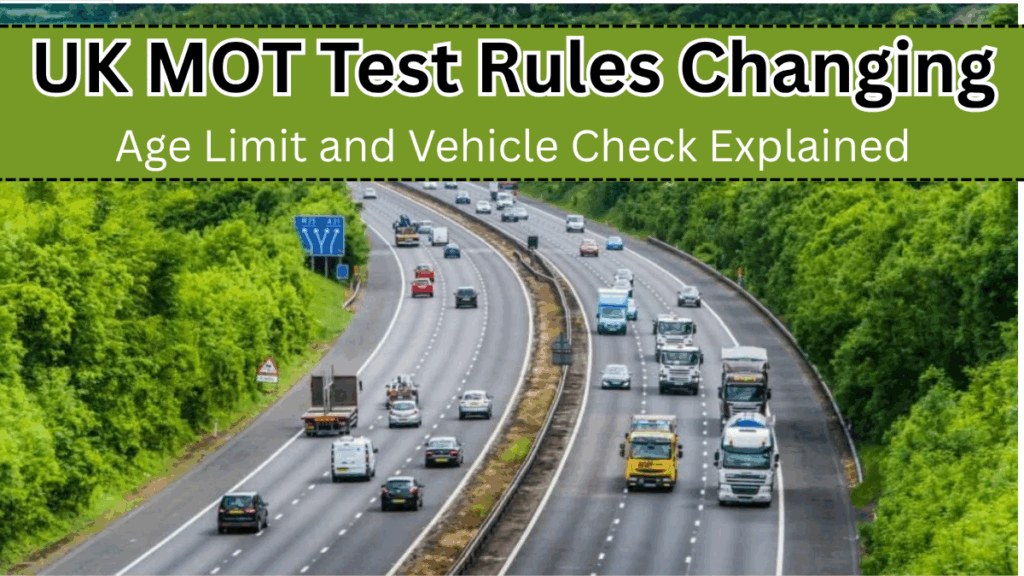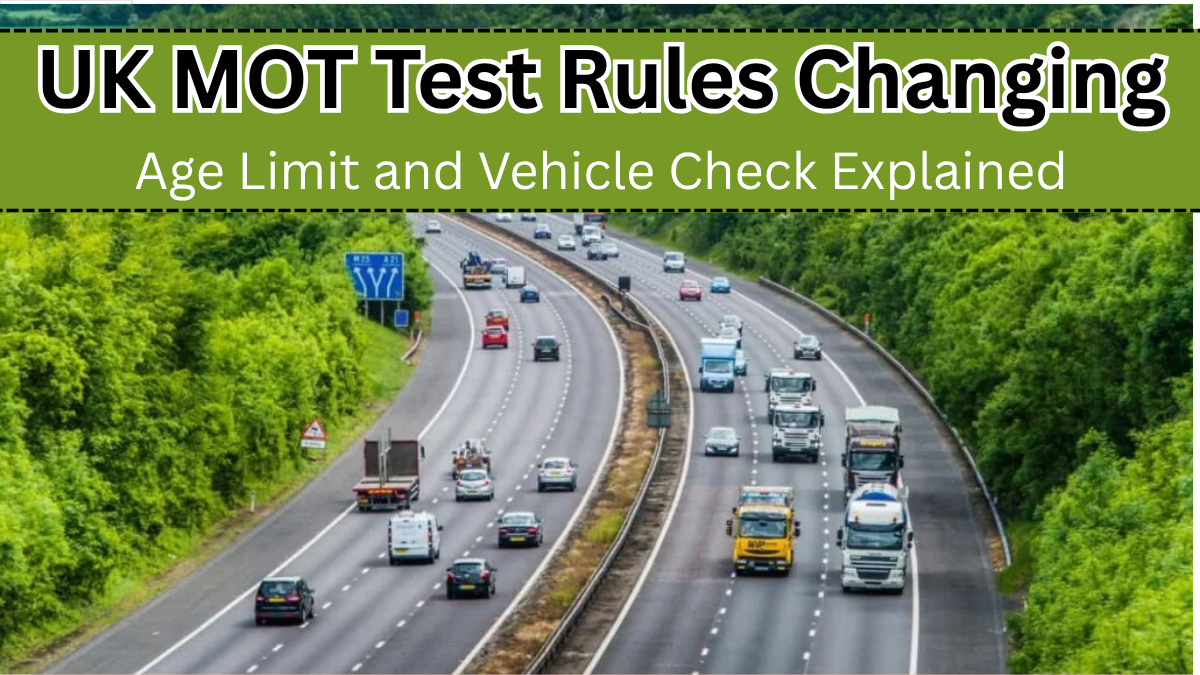Big changes are coming to the UK’s MOT (Ministry of Transport) testing rules in 2025. Whether you’re a new car owner or a long-time driver, staying informed can save you money—and even keep you out of trouble. Here’s a breakdown of everything changing next year, especially around testing age and vehicle checks.

Table of Contents
What is an MOT Test and Why Does It Matter?

An MOT test is a yearly check-up for your vehicle to make sure it meets road safety and environmental standards. It’s a legal requirement in the UK for most vehicles over a certain age.
In simple terms:
No valid MOT? No legal driving.
What’s Changing in 2025?
Key Highlights of the New MOT Rules
The UK MOT Rule Changes 2025 are focused on vehicle safety, newer technologies, and a shift in vehicle ownership trends.
Here’s what’s new:
| Aspect | Current Rule | 2025 Update |
|---|---|---|
| Testing Age | First MOT at 3 years | First MOT now at 4 years |
| Electric Vehicles | Standard checks | Enhanced battery and software checks |
| Vehicle Check Scope | Physical and emission checks | Advanced diagnostics and safety tech |
| Penalties | Fixed fines for expired MOTs | Harsher fines, possible licence points |
Change in MOT Testing Age
One of the most talked-about updates in the UK MOT Rule Changes 2025 is the shift in the testing age.
-
Old Rule: MOT test was mandatory once your car turned 3 years old
-
New Rule (2025): The first MOT will now be required at 4 years
Why the change?
Modern vehicles are built better, last longer, and require less frequent checks in their early years. This also saves drivers money—one fewer test to worry about in year three.
Expanded Vehicle Checks
As part of the new MOT framework, the list of components to be inspected is growing.
Additional vehicle checks will include:
-
Advanced Driver Assistance Systems (ADAS)
-
Battery health in EVs and hybrids
-
Real-time emissions monitoring
-
Lane-keeping and collision-avoidance tech
This aligns with the government’s push for smarter vehicle check protocols that suit today’s increasingly tech-based vehicles.
What It Means for Drivers
Here’s a quick summary of how these changes might impact you:
-
New cars: You’ll save on MOT fees in the 3rd year
-
EV owners: Expect more detailed tests focused on software and battery condition
-
Older vehicles: Face more thorough safety inspections
-
Penalties: Non-compliance could cost you more, so mark those due dates
FAQs
Q1. Will the MOT test still be yearly after the first one at 4 years?
Yes. After the initial test at 4 years, you’ll need to get your vehicle checked every year.
Q2. Are these rules applicable to motorcycles and scooters?
For now, the changes are focused on cars and vans. Separate announcements for two-wheelers may follow.
Q3. How do these changes affect EV owners?
Electric vehicles will undergo additional vehicle checks like battery diagnostics, software scans, and electrical safety tests.
Q4. What happens if I miss the MOT under the new system?
The consequences remain strict. You could face a hefty fine or points on your licence, especially under the 2025 rulebook.
Final Thoughts
The UK MOT Rule Changes 2025 aim to strike a balance between driver convenience and improved road safety. Whether you own a petrol, diesel, or electric vehicle, it’s wise to stay up-to-date with the testing age changes and enhanced vehicle check requirements.
Click here to learn more







